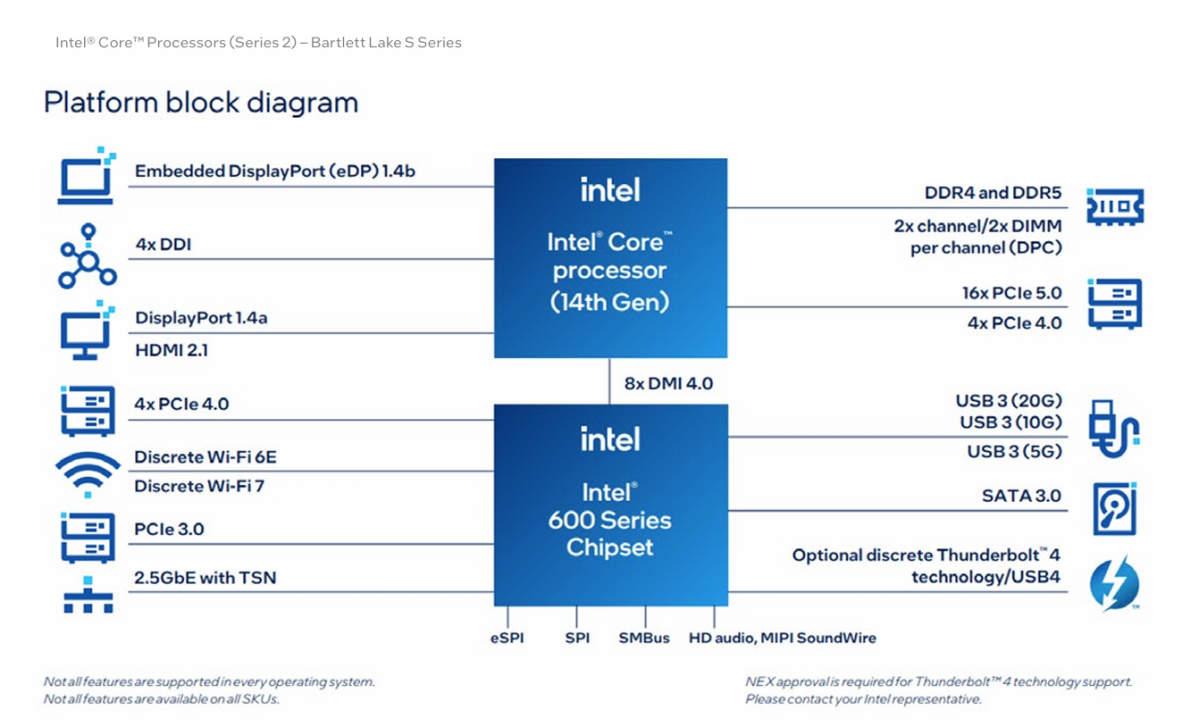Intel documentation has revealed additional code names in the context of the company’s future roadmap: Wildcat Lake, Bartlett Lake, and a 12-core variant of the Bartlett Lake chip made up entirely of performance cores.
Interestingly, the source is a public one: a guidance document on how to use Intel’s platforms for real-time computing. The most recent “gold deck” presentation has been taken down after a Twitter user, InstLatX64 (via Videocardz), noticed it. Intel’s March 2025 version remains in place, though without the roadmap details that the most recent version provided.
The key is a slide that discusses “Intel offerings enabling the (Time Coordinated Computing) TCC Experience. The slide lists several cores “in development:” first, there’s Panther Lake and Nova Lake, both of which Intel has discussed publicly as the flagship CPU offerings from 2025 and 2026, respectively. But the slide also lists Bartlett Lake-S, Bartlett Lake S 12P, and Wildcat Lake, all names that Intel hasn’t discussed publicly.
About all we know of Bartlett Lake is that Intel lists it as an Intel Core (though not Core Ultra) Series 2 chip, possibly inferring that it will end up in the mobile space. As Tom’s Hardware pointed out earlier, the Bartlett Lake embedded chips shipped this year at CES 2025.
Intel has also published a Bartlett Lake-S product brief, showing that Bartlett Lake S features up to 24 cores and 32 threads, PCIe 5.0 connectivity, and DDR-5600 memory support. The edge processors can hit a P-core turbo frequency of 5.6GHz, Intel says; the Core 7 version features up to 24 cores (8 performance cores, 16 efficiency cores, 32 threads). On this chip family, Intel uses the Xe graphics architecture with up to 32 EUs. Intel refers to Bartlett Lake-S as a member of its 14th-gen Core family, paired with a 600-series chipset.

That brief doesn’t mention an all performance-core version, however, which is what the updated Intel slide indicates. Could Intel be prepping a challenger to AMD’s X3D architecture?
Intel’s brief doesn’t mention Bartlett Lake-S in the context of the PC, however—just industrial, healthcare, and infrastructure applications.
Wildcat Lake has also cropped up before, possibly as a processor for thin-and-light PCs or tablets, said to be possibly built on the 18A process.
Will Bartlett Lake and Wildcat Lake turn out to be processors you’ll buy? Right now it’s looking kind of iffy. But with Intel facing competition from both Qualcomm (long battery life) and AMD (high performance), it’s not unlikely that Intel is splitting its forces to take on these new adversaries.
This articles is written by : Nermeen Nabil Khear Abdelmalak
All rights reserved to : USAGOLDMIES . www.usagoldmines.com
You can Enjoy surfing our website categories and read more content in many fields you may like .
Why USAGoldMines ?
USAGoldMines is a comprehensive website offering the latest in financial, crypto, and technical news. With specialized sections for each category, it provides readers with up-to-date market insights, investment trends, and technological advancements, making it a valuable resource for investors and enthusiasts in the fast-paced financial world.
